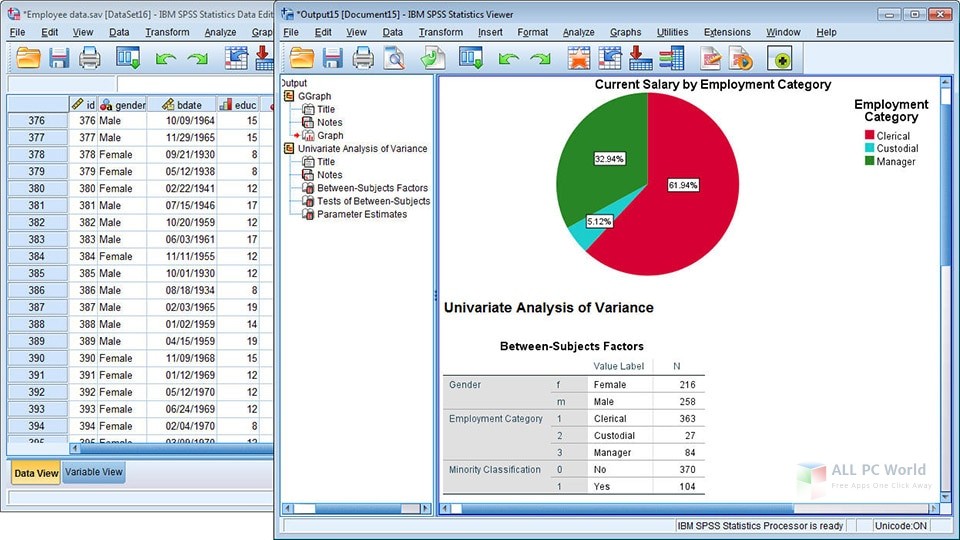


ANOVA and ANCOVA – Conduct contrast, range and post hoc tests analyze fixed-effects and random-effects measures group descriptive statistics choose your model based on four types of the sum-of-squares procedure perform lack-of-fit tests choose balanced or unbalanced design and analyze covariance with up to 10 methods.Compare means – Choose whether to use harmonic or geometric means test linearity compare via independent sample statistics, paired sample statistics or one-sample t test.

Descriptive ratio statistics – Coefficient of dispersion, coefficient of variation, price-related differential and average absolute deviance.Descriptives – Central tendency, dispersion, distribution and Z scores.Frequencies – Counts, percentages, valid and cumulative percentages central tendency, dispersion, distribution and percentile values.Crosstabulations – Counts, percentages, residuals, marginals, tests of independence, test of linear association, measure of linear association, ordinal data measures, nominal by interval measures, measure of agreement, relative risk estimates for case control and cohort studies.CONCLUSION: The knowledge and attitude of primary teachers on the primary prevention of child sexual abuse in Lagos State was low. The male teachers were found to be about 2 times more likely to have adequate knowledge compared to female teachers (OR 1.9 95% CI= 1.05-3.73) and were about 4 times more likely to have a good practice on primary prevention of child sexual abuse (OR 3.5 95% CI= 1.71 - 6.97). 12.7% had a positive attitude towards primary prevention of child sexual abuse and good practice on primary prevention of child sexual abuse was found among 82.5% of the teachers. Adequate knowledge of primary prevention of child sexual abuse was found among 14.3% of respondents. RESULTS: The mean age of the teachers was 46.4☖.5 years and the majority (70.8%) were females. Descriptive statistics, Chi-square test and multivariate regression analysis were done. Data were analysed using SPSS version 23. A self-administered questionnaire was used to obtain information on respondents’ socio-demographic profile, knowledge, attitude and practices on primary prevention of child sexual abuse. METHODS: Cross-sectional design that utilized a two-stage cluster sampling technique was used to select 463 public primary school teachers in Agege Local Government of Lagos State. OBJECTIVES: To assess the knowledge, attitude and practices of primary school teachers on primary prevention of child sexual abuse in Agege Local Government Area of Lagos State.
IBM SPSS STATISTICS 22.0 PROFESSIONAL
BACKGROUND: The professional role of primary school teachers in school-based programs makes them important stakeholders in child sexual abuse prevention.


 0 kommentar(er)
0 kommentar(er)
